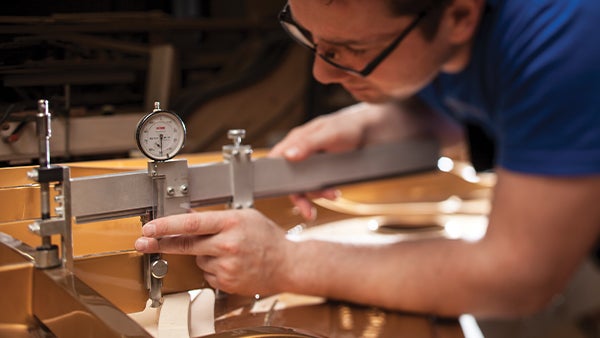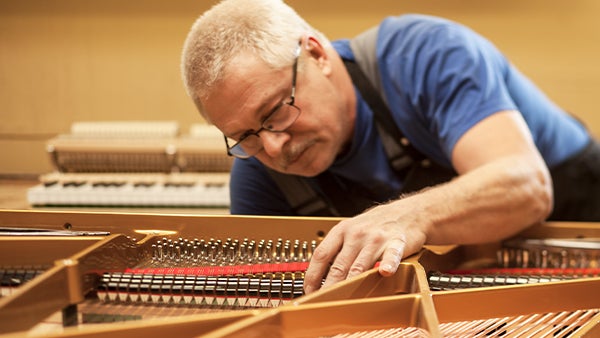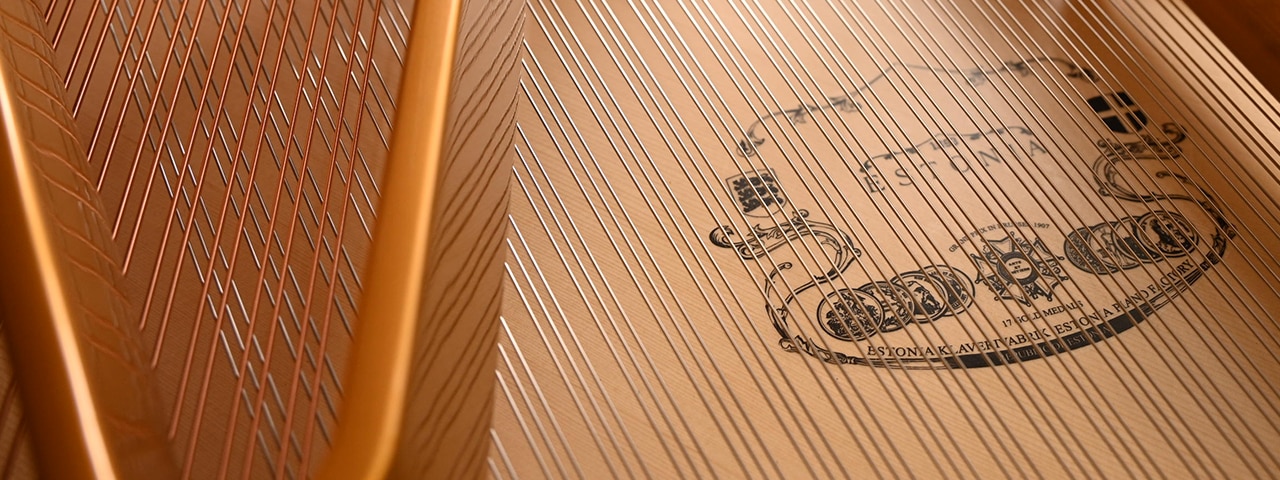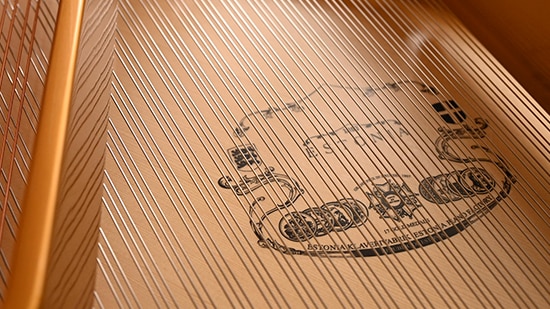The right instrument
Awe-inspiring locations where nature and history offer unforgettable experiences.
If you ask any self-respecting musician, whether amateur or professional, they will tell you that instruments have their own distinct characters and finding the right model is a delicate process. When it comes to pianos, the Estonia Piano Factory knows this better than most.
Prospective customers are encouraged to tour the site in the capital Tallinn’s Kalamaja district, an area praised by Time Out as one of the “coolest neighbourhoods in the world”, to truly understand the handcrafting of luxury pianos. Workers dotted around the factory floor focus on specific stages of the lengthy process, and I watch as wood shavings spring like confetti from a slowly refined component.
Juilliard-trained pianist and company president Indrek Laul describes the factory’s instruments as “singing pianos” and, when you visit, it’s clear to see this is no exaggeration. On my tour, it’s a privilege to watch Laul play, with an enviable lightness of touch, a piece by the world-renowned Estonian composer Arvo Pärt. The last note hangs deliciously in the air and nobody dares breathe until it truly fades away. This is the power of an Estonian piano, in situ.
Estonia has deep musical roots tied to its national identity, with folk music dating back to the 12th century and a rich tradition of singing festivals. Pianos were made here as early as 1779 and there were several piano makers in the country before WWII, but this number dwindled under Soviet occupation and the then-Tallinn Piano Factory became state-owned.
When Stalin forced every nation behind the Iron Curtain to give him a birthday gift in 1950, he gained a piano made by the factory’s Hamburg-trained Ernst Ihse-Hiis, who had been making both grand and upright pianos since 1893. Stalin decreed that the factory should henceforth be the USSR’s only manufacturer of concert grand pianos. All components and customers were also restricted to the Soviet Union, in contrast with today’s liberated, globally renowned company.
In the early post-Soviet independence years, the factory struggled to find its market until Laul came along with a vision: to focus on individual craftsmanship rather than mass-production. He gradually bought up shares and took the helm in the early 2000s with his musician parents and his wife, Triin. Together, they have refined hundreds of stages of the piano-making process and introduced new models. Five are available now: the most compact is the Model 168, named for its length in centimetres, and the largest is the Grand Model 274.
Where once every piano the factory made was black, there are now many more options – one customer chose a white baby grand for her minimalist white hillside home in Spain. For special finishes, try the rare bubinga wood; the more interesting the grain, the more in-demand bubinga becomes. This supply also comes from the Estonia Piano Factory’s wood archive, making it an ethical choice. Meanwhile, the special edition Wiiralt finish, celebrating Estonian graphic artist Eduard Wiiralt, showcases artistry in nature. As Laul explains, “the way the grain is formed looks just like Wiiralt’s work.”


Today, components are meticulously gathered from around Europe, including Kluge keyboards from Germany and resonance spruce from Switzerland for certain soundboards. The multi-layered Baltic hardwood rim helps to create the unique tonal qualities of that distinctive sound. Unlike Steinway, which manufactures its small Essex models in China, every piano is assembled in Estonia.
“We hand wind the strings on the grand piano and hand-notch the bridges,” Laul tells me. “This is the kind of craft you only get with high-end pianos.”
An Estonia Piano Factory model is now permanently installed at Tallinn Airport for visitors to play as they pass through for their flights – perhaps a symbol of Estonia’s international outlook, as much as its musical spirit.
Where can you find Estonian pianos?
The factory works with representatives around the world. In the Los Angeles area, for example, they are represented by Kim’s Piano Company, a family-run business that caters to professional musicians, Hollywood clients and piano enthusiasts.
Talk show host Jay Leno owns the 190 Hidden Beauty model, with the bubinga veneer only visible when it is open and ready to be played. Larry Ellison, CEO of Oracle, has a Model 210.
Musicians like Dave Brubeck and Claudio Arrau have played Estonia pianos. Sviatoslav Richter (who NPR called “the pianist who made the Earth move”) said, on playing an Estonia model, that “There simply is more music in this grand.” An Estonia piano was also used in the country’s Eurovision 2023 performance.
Cultural venues with Estonia pianos include the Council of Europe in Strasbourg, the Hanover Opera House and the Central Synagogue in New York, and they can also be found in prestigious music schools – for example, the Lithuanian Academy of Music.
Laul explains: “The USA is our biggest market, but we also have customers spread around the world, such as Canada, Australia, Japan, Indonesia and China. Last year, we expanded to Singapore as well.” One recent British customer lovingly described the piano-finding process as “like choosing a puppy”.

 Polly Allen explores the remarkable world of luxury piano-makers at the world-famous Estonia Piano Factory.
Polly Allen explores the remarkable world of luxury piano-makers at the world-famous Estonia Piano Factory.

